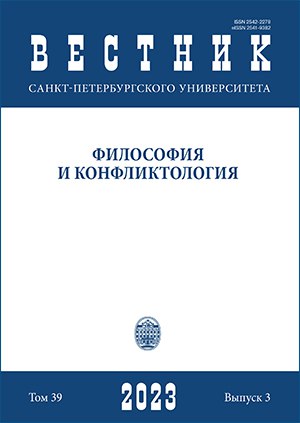Semiosis of Political Action
DOI:
https://doi.org/10.21638/spbu17.2023.310Abstract
Aristotle, calling man “political by nature,” predetermined the actual opportunity to consider politics through the prism of practical action, through specific ways of equitable arrangement of public life. Thrown into a digital existence, where the ambivalent task of realizing one’s vulnerable position arises, exposing oneself to risk, while simultaneously navigating the indefinite space of a dynamically developing community. The modern territory of politics is being mastered by actants with the help of a renewed arsenal of means, taking into account the meaning of design (de + signare), the signs of which acquire multiplication of ideas about complexly organized integrity of its image. Integration ties of semiosis “sew through” the heterotopy of the renewed territory of political action, putting down the chronological framework of events in sign expression (index, symbol, code, number), to compare and supplement possible transformational semiotic shifts and confusions, thus creating a plausible and recognizable semiotic image of the current state of affairs in society. Semiotic representation emphasizes the sign, symbolic nature of political action as a political event, realized by its subject in the process of normogenesis and anchored in the pragmatics of everyday activity. Conditional analytical dismemberment of the process of semiosis (syntactics, semantics, pragmatics) of political action initiates the synchronization of methodological synthesis, which leads to the co-creation of the subject and structure at the level of reflective analysis. This allows us to add the “included third”, traditional for the transdisciplinary methodological approach, into the agent-structure dichotomy, which is classic for the science of politics, serving as a target reason for creating integral image of political action. It should be noted that the “included third” as the target cause does not guarantee the unambiguity of the outcome of the formation of the specified action, but only adjusts the optics of tracking its possible configurations, taking into account both contextual and environmental conditionality.
Keywords:
procreation, replication, reproduction, semiosis, included third, political action, transdisciplinarity, digitalization
Downloads
References
References
Downloads
Published
How to Cite
Issue
Section
License
Articles of "Vestnik of Saint Petersburg University. Philosophy and Conflict Studies" are open access distributed under the terms of the License Agreement with Saint Petersburg State University, which permits to the authors unrestricted distribution and self-archiving free of charge.






